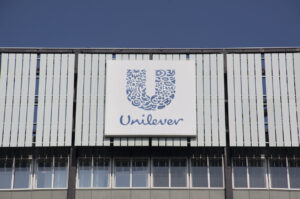The Scoop: Boeing undergoes major leadership changes amid escalating crisis
Plus: British journalists blame Americans for Princess Catherine rumors; Axios identifies 12 media bubbles.

More than two months after a door blew off a Boeing 737-9 plane, sparking a series of safety disasters for the aircraft giant, sweeping leadership changes have been announced.
Effective immediately, Boeing Commercial Airplanes President and CEO Stan Deal will retire from the company, handing the reigns to COO Stephanie Pope. At the end of the year, Dave Calhoun, president and CEO of Boeing as a whole, will step down. Finally, Board Chair Larry Kellner will not stand for re-election, paving the way for Steve Mollenkopf to take his place and lead the search for the next CEO.
“As you all know, the Alaska Airlines Flight 1282 accident was a watershed moment for Boeing,” Calhoun wrote in an email to employees, which was also published on Boeing’s website. “We must continue to respond to this accident with humility and complete transparency. We also must inculcate a total commitment to safety and quality at every level of our company.
The eyes of the world are on us, and I know we will come through this moment a better company, building on all the learnings we accumulated as we worked together to rebuild Boeing over the last number of years.”
The Wall Street Journal reported that Boeing’s stock ticked up 2% in pre-market trading in the wake of the announcements, a notable bump for a stock that has plunged 25% this year.
Why it matters: There is a point at which trust can no longer be repaired with the same leadership team. Boeing had reached that point.
Airline CEOs had requested what the WSJ calls an “unusual” meeting with Boeing’s Board to vent their frustrations over a seemingly endless string of manufacturing issues which have led to blown out doors, missing panels and malfunctioning seat switches. The company’s biggest customers losing faith in leadership was a death knell for the current guard.
The communications around the sweeping changes are bland and to-the-point, with little reference to the ongoing crisis, save a few oblique references, such as “(Calhoun) will continue to lead Boeing through the year to complete the critical work underway to stabilize and position the company for the future.” The rest is largely the departing and incoming leaders thanking each other.
While the communications might not signal much of a path forward, the leadership decisions certainly do. The head of the most affected business unit is out today, but Calhoun will give some runway to transition the company. A new board chair will lead the search for the new CEO.
Who will they choose? Who can step into such a role? And how will he or she help usher in a new era of trust for Boeing?
It’s going to be an interesting year.
Editor’s Top Reads:
- Days after Princess Catherine announced she is undergoing treatment for cancer, the British media is blaming Americans, both in the media and on social media, for the conspiracy theories that festered while the princess was out of the public eye. The New York Times noted that the infamous British tabloid press was unusually restrained even as wild rumors circulated online, and that English papers refused to publish some photos of Catherine that American-led TMZ was happy to publish. But there was also an acknowledgement from experts that the royal family’s silence and the release of an edited photo allowed for those rumors to run wild. As we wrote on Friday, it’s almost impossible to balance an individual’s right to privacy with the voracious appetite of the public. But the release of that doctored photo certainly seems to have tipped the family’s hand into revealing information, perhaps before they were ready to.
- Axios has identified 12 news bubbles that define how Americans receive information. Developed based on conversations with influencers, media executives, C-suite leaders and more, the list includes categories like “Musk-eteers” (a mostly male group who love X, Elon Musk and Joe Rogan); New Age Grandmas (older women who use Facebook primarily to keep up with the grandkids – but who sneak a little news in, too); and Passive-ists (those who just don’t consume much news at all). The entire list is worth reading and absorbing for PR professionals who often must pop into several of these bubbles to reach their target audience. Expect the news sphere to continue to fracture, making the role of media relations ever more complicated.
- The European Union continues to investigate and penalize American tech giants for allegedly failing to comply with its new, sweeping Digital Markets Act, CNN reported. The DMA is intended to increase competition and choice in the digital spaceand means big changes for major players already in the space. Among the investigations underway:
- Meta’s option for customers to pay a monthly fee to remove ads may not be enough for the EU, whose commission wrote that, “the binary choice imposed by Meta’s ‘pay or consent’ model may not provide a real alternative in case users do not consent, thereby not achieving the objective of preventing the accumulation of personal data by (large companies).”
- Apple and Google may be hampering other companies’ ability “to freely communicate and promote offers and directly conclude contracts, including by imposing various charges.”
- Google may not be doing enough under the act to ensure that competing services show up in search results versus its own products, such as Google Flights.
It all could spell major changes for these companies – both in Europe and back in the United States, which seems to be following the EU’s lead and launching several antitrust investigations of its own.
Allison Carter is editor-in-chief of PR Daily. Follow her on Twitter or LinkedIn.








Thanks for sharing the Axios article last week. As a marketing-communications and board professional who studies human behavior, it was insightful and more relevant than the classic Red State-Blue State model.